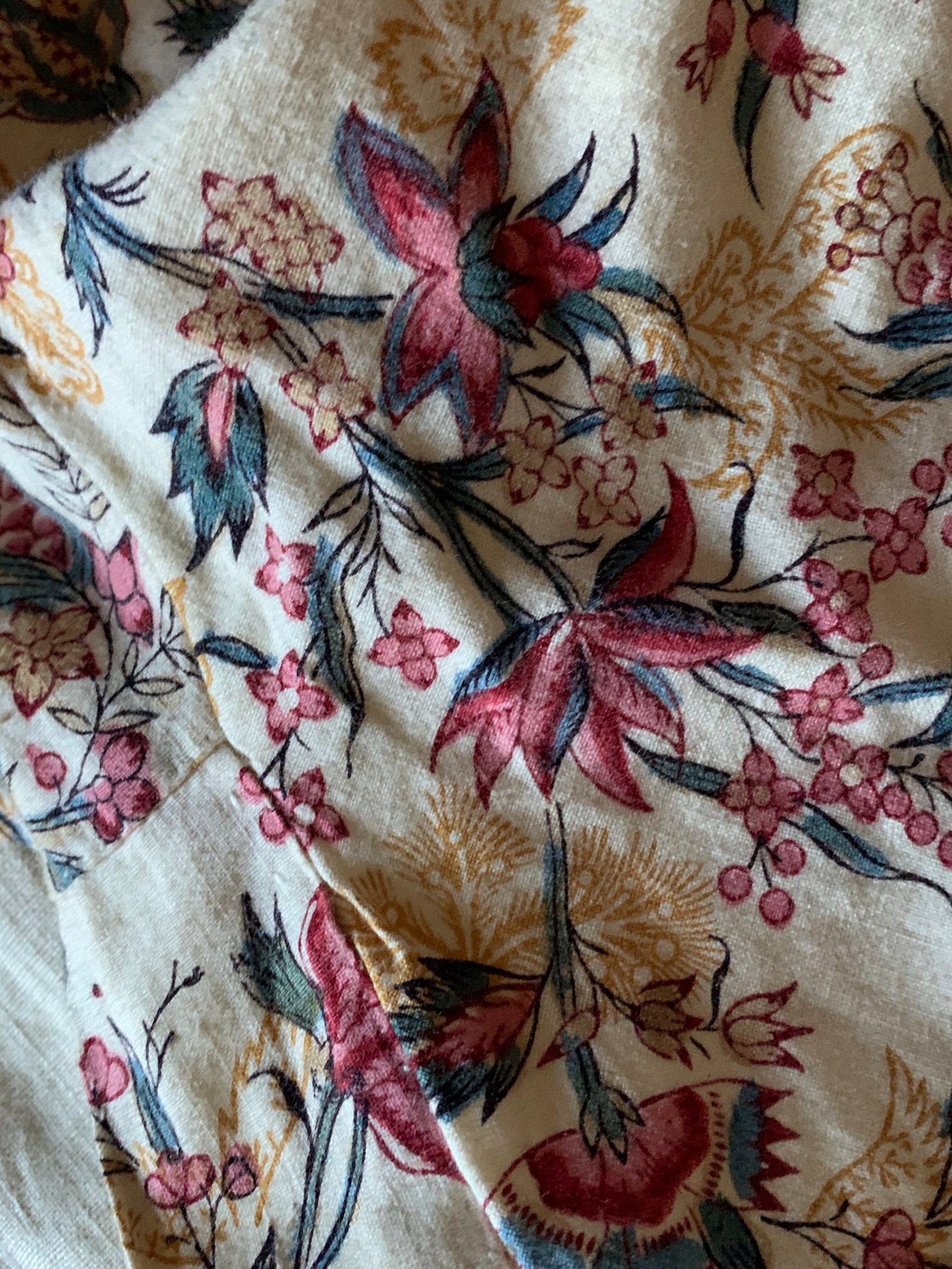
Re-Fashioned
Altered and Re-Fashioned
By Jenny Frances Mearns project team member
The process of alteration involves changing the original form of a garment or object, to meet a particular need that has arisen by the intended wearer. This could be for practical reasons (for example, shortening a hem, letting out a seam), or aesthetic reasons (changing the style of a garment to suit the wearers tastes, to keep up with fashion trends). In the past garments were often altered.
This dress is an excellent example of historic garment alteration practices. Made of English printed cotton, it is believed that the gown was originally produced in the late eighteen century, possibly around the 1770s-1780s. The dress is cut with an opening at the centre front of the bodice, as originally it would have been worn with a separate central panel, known as a stomacher. There are no fastenings evident on the bodice, although it was common practice for the stomacher to be attached with either handsewn stitches or simply pinned into place when worn. From inspecting the inside of the garment at the back of the gown the original panels of the bodice remain intact, tapering into a flattering V shape. However, later alterations conceal this, with the skirt of the bodice now being stitched to join the bodice in a straight line, quite a bit higher than the original waistline.
Along with the raised and now squared-off waistline, the most striking alteration is the front of the skirt. In place of one opening, with the later alterations there are now two openings, positioned either side of the centre front of the skirt, fastening with silk ribbon ties to the back. These openings create a kind of ‘apron’ effect, enabling the front section of the skirt to be very adjustable to the wearer through the use of the ribbon ties at either side.
Further alterations are also evident, the skirt hem has been shortened through the creation of a tuck in the fabric spanning the circumference of the skirt. This is interesting, as instead of cutting any unwanted or excess fabric away, the tuck enables the fabric and dress to remain intact, thereby allowing for any alteration to be reversible. The inside of the sleeve cuffs have drawstrings, enabling the wearer to push the sleeves up the arms, then tighten these drawstrings and tie in place, creating a gathered effect fashionable during the latter years of the eighteenth century.
The purpose of these alterations could be for several reasons. The open bodice enables the wearer to effectively adjust the placement of the dress to suit their figure. Teamed with the sheer adjustability of the skirt this could suggest the gown was altered to accommodate pregnancy. Additionally, the alterations are also evocative of the changing fashion of the times. During the 1770-1780s, gowns were worn with pointed bodices, with open centre fronts to accommodate attractive interchangeable stomacher panels. This is very much evident in the original shape and cut of this gown. However, as times moved on and fashions changed, towards the end of the eighteenth century, around the 1790s waistlines started to square off, straightening and gradually getting higher; eventually reaching just below the bust in the 1800s in what would be known as the Empire Line style of the Regency period. Hints of this can be seen throughout the alterations in this gown, creating a kind of hybrid piece that transcends across decades of the later eighteenth century.


